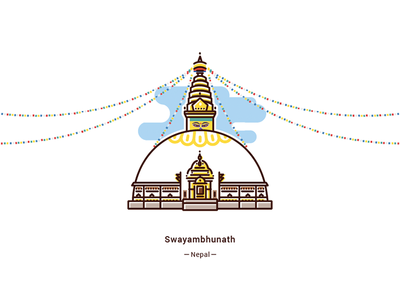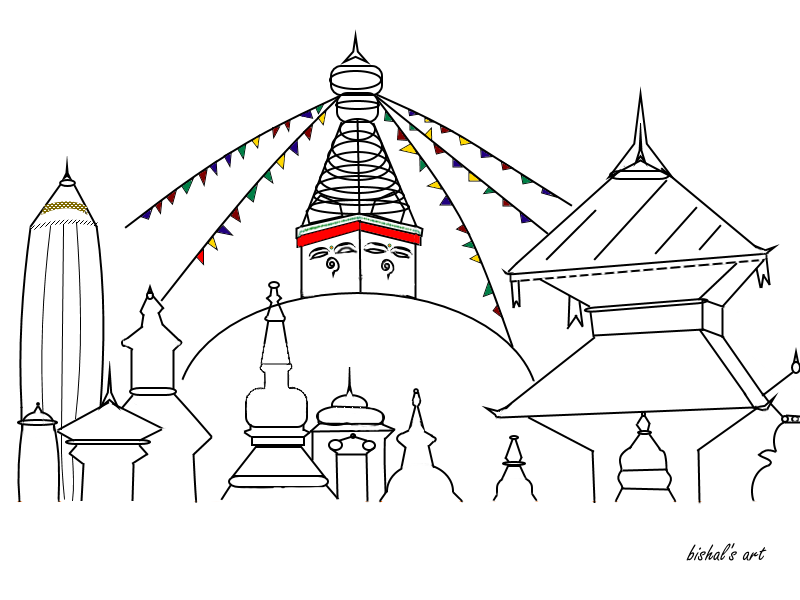Expectations and perceptions of what is referred to as “manly” behavior play a major part in our society even in this day and age.
We live in the 21st century, an age of advanced technology and innovations, yet men and women are still boxed into presumptions placed on them by the virtue of their sex. In fact, at a very young age, boys are taught the language and behavioral patterns that fix them into society’s concept of what it means to be a man. Who says that boys can’t do something just because they are boys?
Let’s take a look at some of the stereotypes that still raise their ugly heads when it comes to how men should behave.
Let’s take a look at some of the stereotypes that still raise their ugly heads when it comes to how men should behave.
A Museological Tour of Kathmandu Valley
The valley of Kathmandu has a history much richer, deeper, and mystifying than known to most of us. According to Hindu mythology, it is said to have originated in the mythological era due to the draining of the water of the valley by Lord Vishnu, and in Buddhist mythology, by Bodhisattva Manjusri. The Gopalraj Bamsawali, the oldest chronicles of the valley, tell us of the history of the valley since the beginning of Kali yuga (popularly calculated to be B.C. 3102), and many more religious texts tell us about the antiquity of the valley, which wears multiple layers of mystery and wonder. Immersed in this wonder and mystery is the art of the valley, currently preserved in museums, and many still standing majestically in situ.
Let me take you on a cultural tour of the resplendent arts of the valley that are documented, preserved, and exhibited in the main museums of the valley. Although there are more than twenty museums dispersed in various corners of the valley, we will take a closer look at those situated in five of the seven monument zones inscribed collectively as World Heritage Site (WHS) of Kathmandu Valley.
Let me begin with the oldest museum of Nepal, National Museum, located in the serene and green neighborhood of the army barrack on the way to the Swoyambhunath Stupa. This museum is an encyclopedic museum, housing collections related to stone, metal, wood, and manuscript art of Nepal in the art gallery called the Juddha Jatiya Kalashala, a Buddhist art gallery, an international doll gallery, and an ethnographic section. The portrait gallery, the numismatic gallery, proving a comprehensive history of the currency of Nepal, artillery gallery, and a gallery of royal costumes are temporarily closed due to damages caused by the earthquake of 2015.
The Juddha Jatiya Kalashala holds in its collections, exquisite images of Hindu deities from the pre Christian era. The oldest dated stone statue here is that of King Jayavarma, dated Samvat 107, or 185 A.D., which was accidently found at Maligoan when digging for the foundation of a private house. This statue provided evidence of the Varma dynasty, claimed by late artist/historian Lain Singh Bangdel to be the predecessor of the Lichhavi dynasty. The numerous metal images are evidences of the world-famous Nepalese metal art and artisans. Mostly influenced by tantric art, these metal sculptures of varying sizes are some of the best examples of metal art of Nepal. Complementing the stone and metal sculptures is wooden art in the form of images and struts used in the traditional style of Newari architecture.
The museum is open daily between office hours, and stays closed on Tuesday. In the vicinity of the National Museum is the Natural History Museum, which houses about 40,000 zoological specimens, 7,000 botanical specimens, 400 fossils, and 100 skeletons. It serves as a centre for research and education for students and scholars. The museum is open every day, except on Saturdays and on official government holidays, from 10:00 a.m. to 4:00 p.m. On the top of the Swoyambhunath hillock, next to the holy stupa, is a gallery that houses archaeological collections excavated and found on the premise. Random images relating to the life of the Buddha are displayed for a general view.
The Kathmandu Durbar Square, another monument zone enlisted in the WHS, narrates the history of Nepal from the Malla, Shah, and Rana periods. Being the centre of political activity since the Malla period, it was a concentration of power as well as center for activities. The then palace of the kings, now called the Hanuman Dhoka Palace, after the installation of the two images of Hanuman by King Pratap Malla, in now converted into a heritage site. One side of the complex is converted into a biographical museum of the kings of the Shah Dynasty, King Tribhuvan, Mahendra, and Birendra. Elaborate displays of the items used by the royalty, their beds, study tables, writing equipments, various official attires, items of daily use, and gifts from other countries provide a preview of the regal lifestyle. Currently, the museum is closed due to damages caused by the 2015 earthquake.
Moving to Patan, the then palace of the Malla kings is currently converted into a resplendent museum of the ‘finest collection of religious art in Asia’, as quoted by Lonely Planet. The attractive display of images is segregated into thematic categories, forming galleries dedicated to early Hinduism and Tantrism, Buddhism, metal casting technology, architecture, and the historical view of Nepal, comprising of paintings of landscapes, rural life, and lifestyle of Nepal, when the country first opened its boundaries to outsiders. Most of these paintings are reprints of Henry Oldfield. The museum remains open during office hours throughout the week, with the exception of Tuesday.
A drive away from the hustle and bustle of Kathmandu and Patan takes us to the oldest city of the valley, Bhaktapur. From my personal experience, it is the place I would spend a day to relax and inhale history and culture amongst the splendiferous art and architecture flavored with antiquity. Being the ancient capital of the Malla kings, Bhaktapur is often regarded as the cultural capital of Nepal. Here, too, the ancient palace has been converted into the National Art Gallery Museum. Displayed are various inscriptions providing information about social, political, cultural history of the times, stone art, mostly religious, and most famously, paintings in the form of manuscript paintings, wall paintings, and pata chitra (cloth picture). A look at these ancient art forms assures anyone of the plenteous lifestyle of Nepalese culture. A little away from the National Art Museum is the famous Bhaktapur woodcarving museum housed in the Pujari math, or the residence of the royal priests. The building itself has the best examples of wooden art in the form of elaborately carved windows, doors, tympanums, struts, and other decorative and utilitarian items. The famous peacock window displaying the regal peacock is placed on the eastern side of the building.
Driving deeper into the wilderness of the valley, seven kilometers uphill is another monument zone, the Changu Narayan Temple complex. Known to bear the first dated pillar inscription installed by King Mandeva of the Lichhavi dynasty, this area holds a crucial significance of the political history of Nepal. A small private museum in the vicinity opened by an enthusiastic local has successfully managed to attract quite a few visitors. This museum has a unique collection of coins, including the world's smallest coin, and leather coins from the second century. Besides coins, ancient and rare objects of daily life of the locals, including an all-leaf raincoat and a 500-year-old dish washing rack are some of the highlights of the museum.
Although this articles take you through a tour of the main museums of the valley, a walk through any of the three main cities of the valley, as well as those ancient thriving towns of Panauti, Bungamati, Sankhu, Kirtipur, Khokana, etc. provide you with an experience of walking through a museum. Large temples, small temples, images of gods, their vehicles or mounts, and tall pillars with seated kings line the streets, and are also scattered around the towns. Each image has a story to tell, and when interpreted, they make connections with the past and the present. They function as open-air museums, or in today’s world of new terminologies in museology, as eco-museums, with community-based ownership and participation taking precedence over the top-down system of management and operation.









